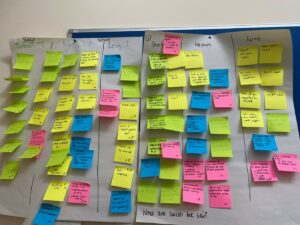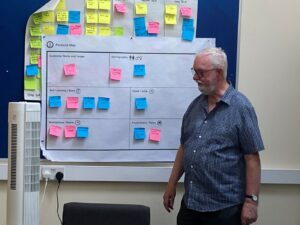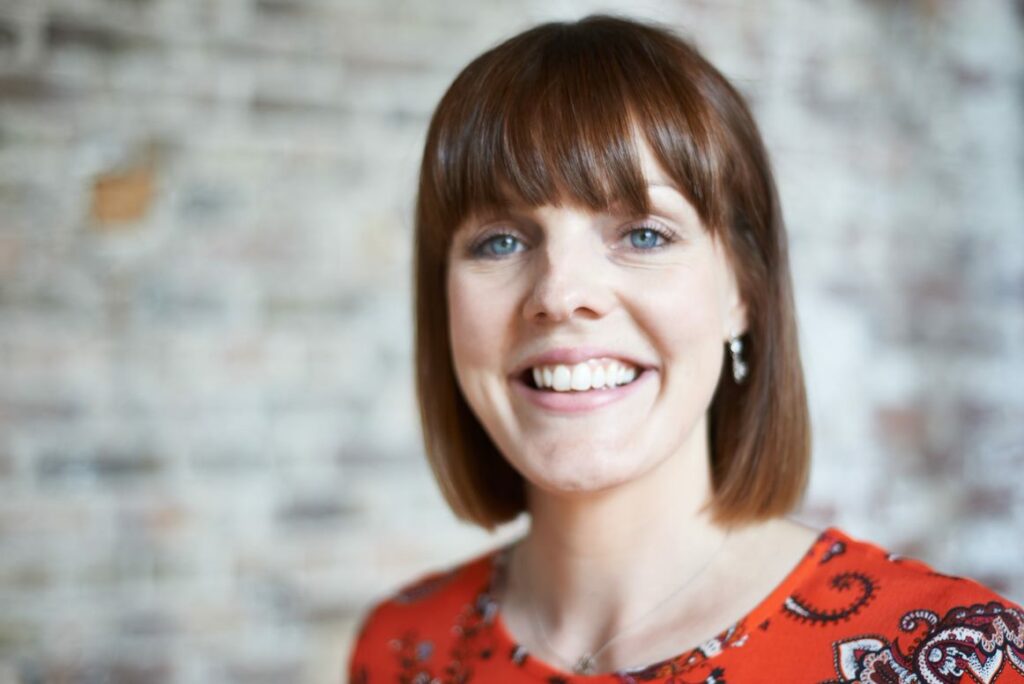In her last blog, Digital Transformation Programme Manager, Sarah Rendall, introduced our new Design Sprints in Healthcare project, and how its working in practice to support NHS teams to create solutions to current challenges and redesign existing processes.
In this follow up blog, Sarah shares her ‘top tips’ and learnings about applying design thinking in the NHS.
If you haven’t read Sarah’s first blog yet, you can read it here.
1. Preparation is key
Preparatory meetings before the design sprints were so important to define what needed to be achieved and use this to drive the tools applied on the day and ensure the session flowed. It gave us a point of reference to always come back to whilst not being too prescriptive and hinder creativity. In a short space of time, it’s not possible to apply all the tools used in a design sprint, but by defining these criteria upfront, we were able to select the best methods we could apply to achieve success.
2. Bring in the experts
Having a clinical lead on the project team is a must. We have been lucky to have Dr Mike Smith involved throughout the project who is an advocate for design thinking and a clinical expert. His advice and knowledge has played a crucial part in defining the success criteria for each sprint and a point of reference on the day. Also, our participants have been selected particularly due to their experience and involvement in the processes being discussed on the day. This knowledge has produced fast results from those who know what we are talking about inside out.
3. Visual impact
Due to the large scale diagrams and use of colourful post- it notes, visually it was possible to see quickly see where the biggest pain points were and priorities. Hint….the bit with the most post-it notes! Keeping these up on the walls throughout means you can immediately see the journey you have come on and refer back when needed. Also, using colour means you can categorise ideas and solutions easily which is particularly useful when looking at stages of a healthcare pathway.

4. It’s all about people
The design sprints brought together people from across different organisations, at all levels, to focus on a common goal. The group jointly defined and agreed on what the problems and priorities were and used these to drive the solutions. The use of stakeholder and empathy mapping helped the group to really understand the needs of the user and apply human-centred design to form solutions focused on these users.
5. Joint buy-in
There were points where it was important for everyone to work individually, jotting down ideas on post-it notes (strictly no conferring!) before bringing these ideas together as a group together on a wall. The group would then discuss and refine these ideas using a method called ‘dotmocracy’ using sticky dots to vote on what they felt were the most important points.
These methods allowed everyone to present their opinions and the vote ensured the group collectively made a decision about how to progress.
6. Everyone is equal
The groups worked really well together across both sprints and the environment acted as a leveller. Everyone got their ideas and voice heard and the ideas voted on going forward didn’t necessarily come from those most senior around the table. It’s amazing to see how motivating it can be to have your idea taken forward out of all those presented, particularly if you’re not usually the type of person to speak up.

7. Design Sprints are rapid
By nature, design thinking is a rapid process and the time constraints meant that we had to keep to time and make quick decisions. Time boxing activities really helped and this pressure added to the creativity as participants would put things down on paper quickly, capturing ideas before they were influenced by too much thought.
Next steps…..
At the AHSN NENC we are investing in design thinking within healthcare and would encourage anyone interested in using these methods to get in touch to find out how we can help.
In terms of this project, there are some virtual sessions that need to take place following our second design sprint. Lesson learnt, book these in advance. Diaries are busy and trying to coordinate them is one of the hardest parts of a project like this. Also, we’ve been working with the team at Northumbria University who are providing an evaluation to show how effective this way of thinking is, whether participants are receptive and the changes that need to be made to account for the pressures and the sector.
It’s been intense at times. The time pressures have meant that we have pushed participants through time boxed exercises and rapid decision making. What I’ve experienced though, is that when there is a collective buy-in and a drive to make a change around the table, this can be achieved. Sweets help for an afternoon boost and if it happens to be the hottest day of the year, ice lollies keep cool heads!
If you have a project, process or pathway which you think would benefit from the application of design thinking, then get in touch with Sarah at [email protected].

